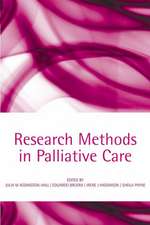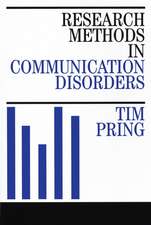Immunohistochemistry: Essential Elements and Beyond: Techniques in Life Science and Biomedicine for the Non-Expert
Autor Alexander E. Kalyuzhnyen Limba Engleză Hardback – 6 apr 2016
· producing transgenic animals
· studying the effects of drug treatments
· electrophysiological studies
· animal surgery · isolating and differentiating stemcells
· super-resolution microscopy
Immunohistochemistry for the Non-Expert is aimed at a wide audience, including molecular biologists, pharmacologists, immunologists, chemists, cell biologists, physiologists, and researchers involved with animal anatomy studies.
| Toate formatele și edițiile | Preț | Express |
|---|---|---|
| Paperback (1) | 578.77 lei 6-8 săpt. | |
| Springer International Publishing – 25 apr 2018 | 578.77 lei 6-8 săpt. | |
| Hardback (1) | 774.96 lei 6-8 săpt. | |
| Springer International Publishing – 6 apr 2016 | 774.96 lei 6-8 săpt. |
Preț: 774.96 lei
Preț vechi: 815.75 lei
-5% Nou
Puncte Express: 1162
Preț estimativ în valută:
148.29€ • 154.52$ • 122.78£
148.29€ • 154.52$ • 122.78£
Carte tipărită la comandă
Livrare economică 03-17 aprilie
Preluare comenzi: 021 569.72.76
Specificații
ISBN-13: 9783319308913
ISBN-10: 3319308912
Pagini: 85
Ilustrații: XIV, 85 p. 36 illus., 2 illus. in color.
Dimensiuni: 155 x 235 x 8 mm
Greutate: 0.32 kg
Ediția:1st ed. 2016
Editura: Springer International Publishing
Colecția Springer
Seria Techniques in Life Science and Biomedicine for the Non-Expert
Locul publicării:Cham, Switzerland
ISBN-10: 3319308912
Pagini: 85
Ilustrații: XIV, 85 p. 36 illus., 2 illus. in color.
Dimensiuni: 155 x 235 x 8 mm
Greutate: 0.32 kg
Ediția:1st ed. 2016
Editura: Springer International Publishing
Colecția Springer
Seria Techniques in Life Science and Biomedicine for the Non-Expert
Locul publicării:Cham, Switzerland
Cuprins
Short Historic Overview.- Primary Antibodies.- Choosing Commercial Suppliers of Primary Antibodies.- Detection and Visualization of Antigens.- Ancillary Reagents for IHC.- Preparing Tissues for IHC Staining.- Staining Protocols.- Microscopy Examination and Collection of Digital Images and Their Presentation.- Concluding Remarks.
Notă biografică
Alexander E. Kalyuzhny graduated in 1981 from the Biological Department of the Saratov State University in Russia. After graduation, he performed research on the effects of narcotic drugs on the morphogenesis of early embryos, which he defended as his Ph.D. thesis in 1987. In 1992, Dr. Kalyuzhny was invited to join the Department of Pharmacology at the University of Minnesota (USA), where he is currently affiliated with the Department of Neuroscience. He is the author of 31 papers in peer-reviewed journals and 16 book chapters, and has served as the editor of 3 books (Humana Press/Springer). He is also the editor-in-chief of the open-access journal Cells.
Textul de pe ultima copertă
Aimed at both beginners and experienced researchers unfamiliar with the technique, this book provides a concise and easy-to-understand guide to using immunohistochemistry. It identifies the proper place and purpose of each component of immunohistochemistry, emphasizes the components that are of critical importance, and explains the logistics of experimental approaches. Understanding the principles of immunohistochemistry allows for the identification and localization of protein targets and is of crucial use in the following experiments:
· producing transgenic animals
· studying the effects of drug treatments
· electrophysiological studies
· animal surgery
· isolating and differentiating stem cells
· super-resolution microscopy
Immunohistochemistry for the Non-Expert is aimed at a wide audience, including molecular biologists, pharmacologists, immunologists, chemists, cell biologists, physiologists, and researchers involved with animal anatomy studies.
· producing transgenic animals
· studying the effects of drug treatments
· electrophysiological studies
· animal surgery
· isolating and differentiating stem cells
· super-resolution microscopy
Immunohistochemistry for the Non-Expert is aimed at a wide audience, including molecular biologists, pharmacologists, immunologists, chemists, cell biologists, physiologists, and researchers involved with animal anatomy studies.
Caracteristici
Identifies the proper use of each component of immunohistochemical experiments Concise and intuitive guide to using immunohistochemical techniques Technique most useful for the following types of experiments: producing transgenic animals, studying the effects of drug treatments, electrophysiological studies, isolating and differentiating stem cells, super-resolution microscopy Includes supplementary material: sn.pub/extras























